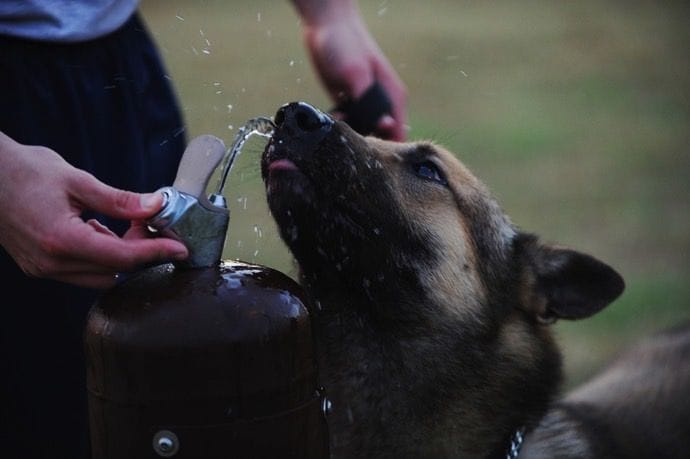Prepare for the Park
Have you been thinking about taking your pup to the dog park? Do you know what to do when you take your dog to the park? What about before you take them to the park? There's things you need to do to prepare before taking your pup to the dog park. There can be hazards at the dog park and it can be a scary experience for owner and dog alike. Knowing how your dog responds to certain stimuli, like other dogs running around and jumping, can make the introduction to the dog park easier and smoother. Brushing up on your dog's body language can also let you know when your pooch is stressed and not having a good time. So how do you prepare for the dog park? First, make sure your dog listens to you and comes when called. If it's your first time going to the park, take your dog during "off hours" when it's not busy or no one else is there. This will help get your pup used to the idea of the park. If there are other dogs there when you go, watch their body language. If they seem to be showing aggressive body language or you have a gut feeling about a dog, leave and bring your dog back later. Most importantly, make sure your dog is up to date on all their vaccinations before going to the park. After you've gotten your dog used to the idea of the park, bring them when there's a few dogs there to introduce him to. Try going through a side gate that isn't busy so he doesn't feel intimidated by all the other dogs around him. Walk your dog around the park so he doesn't feel like he's stuck in one spot and introduce him to other dogs of his size and temperament.
How to Spot Issues
If your dog starts showing signs of anxiety then it may be time to leave or go to another part of the dog park. If you can't tell if your dog is having fun, try removing him from the situation and see how he responds. If he pushes up against you and tries to avoid the other dogs, then he may be ready to leave. If he pulls against you and tries to stay with the other dogs, then he's probably having fun and wants to stay. Here's some body language to look for that show anxiety or fear: hiding behind objects or people, urinating submissively, tensing of the body, hunching over with their head down, trying to look small, putting their ear back or flattening them, tucking the tail or wagging it low and fast, and whimpering and whining. Signs of aggression are snarls or raising the top lip, showing their teeth, stiffens their body with tail straight up or back, pinning another dog and standing stiffly over them, staring with a fixed gaze, putting up their hackles, repeatedly putting their muzzle onto another dog's neck, back, or shoulders, and incessantly following or mounting another dog who doesn't want to play.
Do's and Don'ts
Don't leave your dog unattended. Keep a watchful eye on your dog at all times. Clean up after your pet. Don't let your dog drink out of puddles. There can be harmful parasites lurking in dirty water that you don't even know is there and this can cause all kinds of trouble for your pooch. Bring a bowl with clean water for your pup. Don't let your small dog play in designated large dog areas or large dogs play in designated small dog areas. Don't bring an overly excited dog to the park. Take them for a walk first to burn off some energy. Make sure your dog is treated for fleas and ticks. Watch for signs of heat stroke. Make your pet take plenty of breaks and avoid the park during mid-day when it's hottest out. If your dog starts to pant excessively, cool her down by pouring water on her or spraying her with water and make her drink. If she collapses or starts vomiting, get her to your vet immediately. Most of all, have fun with your pup!




No comments:
Post a Comment